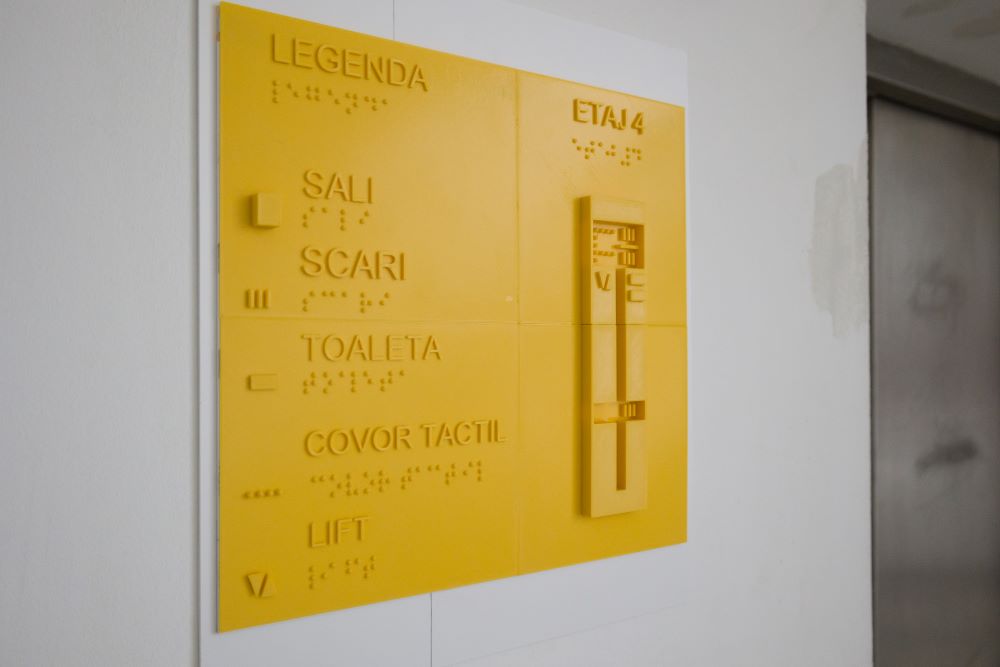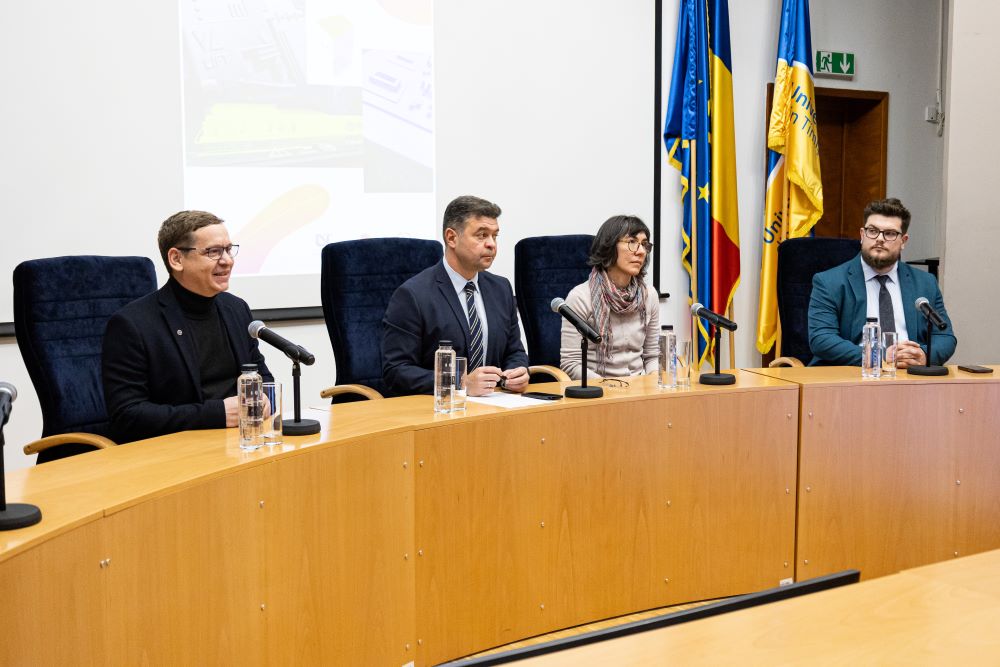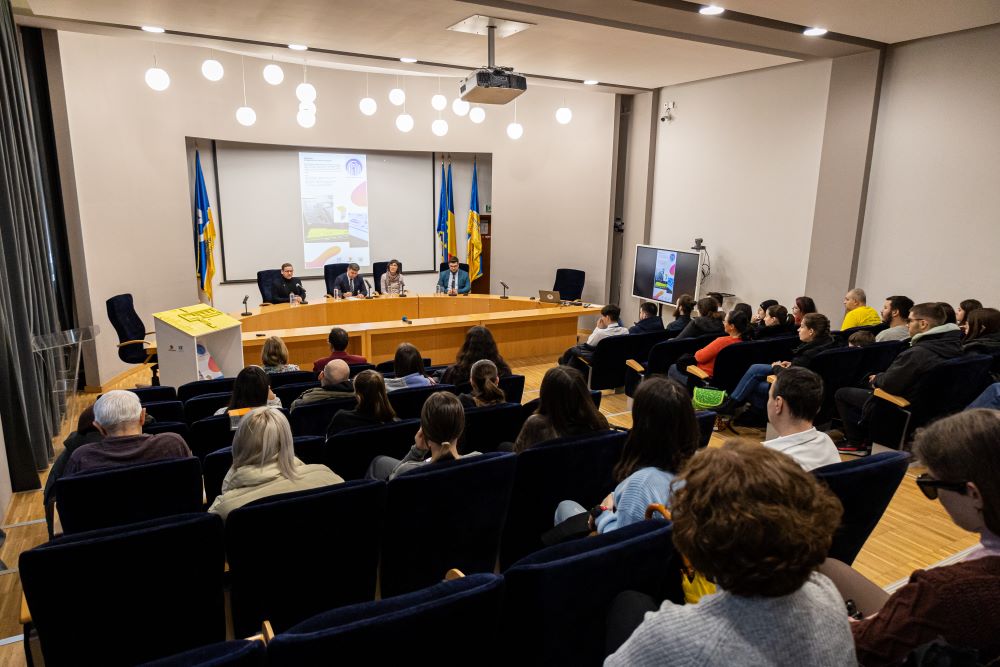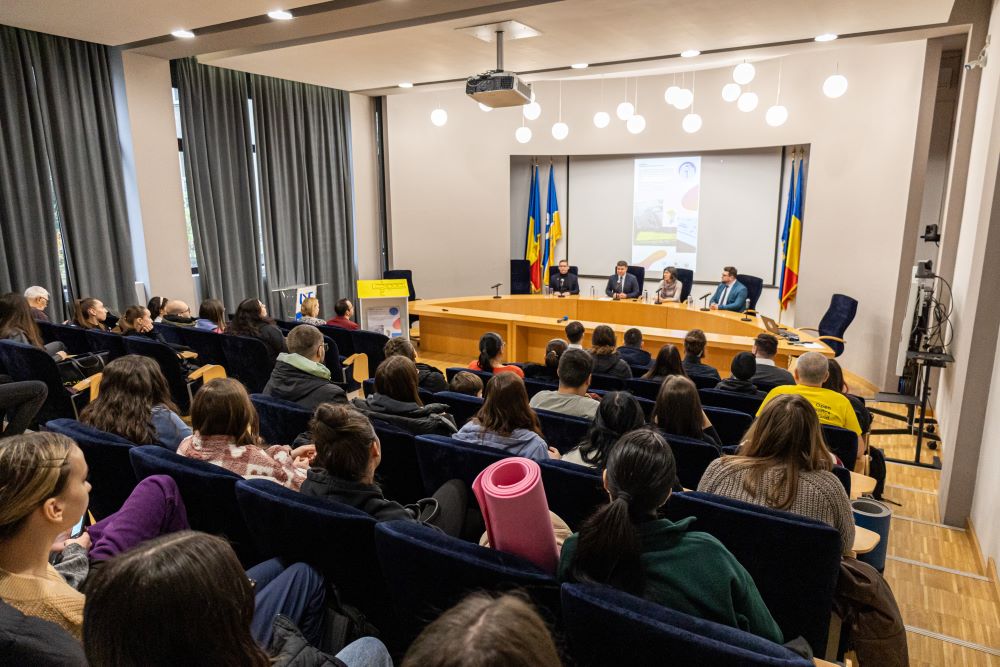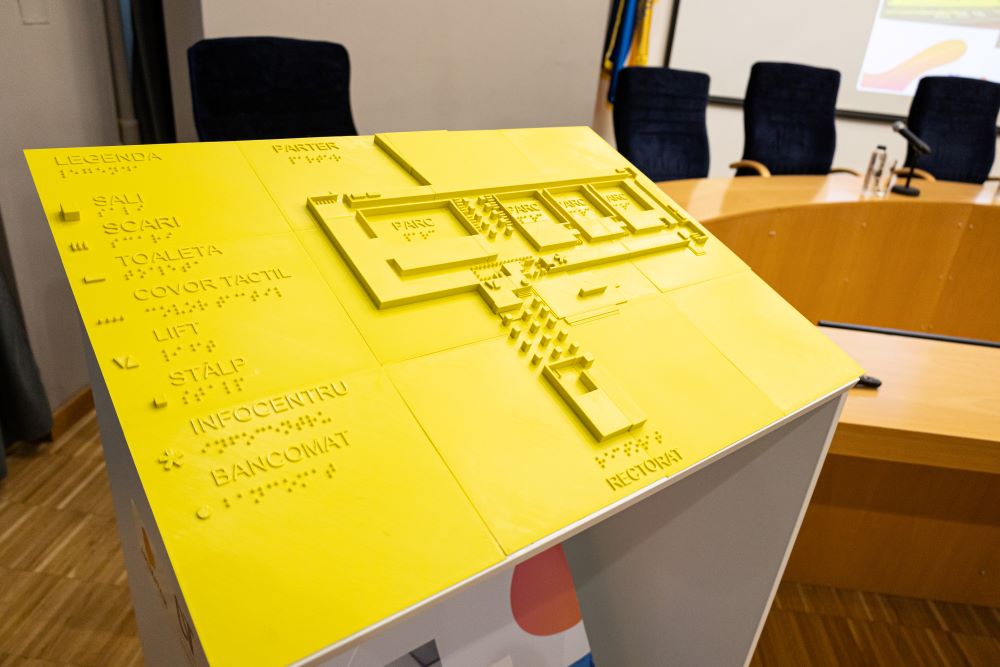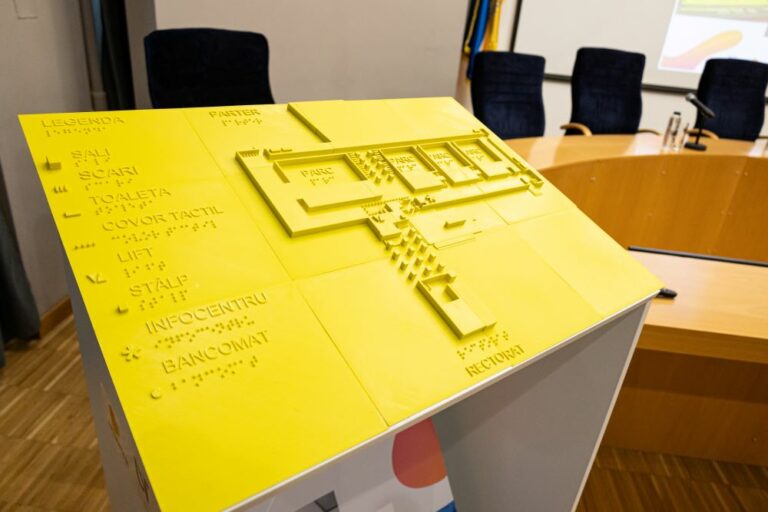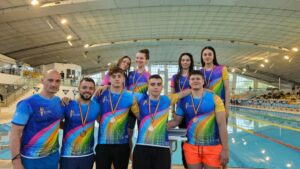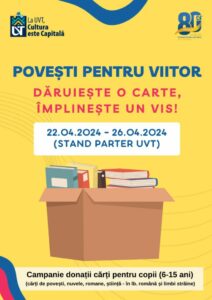UVT launched the project "MapSense – Navigating the World by Touch”, a unique project in Romania, which makes all the main spaces of the university premises accessible in the form of tactile models.
The team involved in the project worked for more than a year to create the seven large models. They are printed from plastic, using the 3D printing technique. Their purpose is to provide blind people with a reduced-scale model of the structure of each floor of the building. Such tactile models help the blind to understand the space in which they are and to orient themselves much better inside such a complex building. The models are mounted at the main entrance and near the elevator exit on each floor.
UVT rector, Marilen Gabriel Pirtea: "UVT has long become a space of education with a focus on inclusion. The accessibility process by labeling the access to the classrooms with the Braille Alphabet was noted at the national level. Now, through the MapSense project, we are building on this approach and completing orientation support for the blind by installing these tactile maps. I note an essential characteristic of the project team, namely the interdisciplinarity and heterogeneity of the participants, from students to PhD students, from all the necessary specialization categories. The whole team deserves to be congratulated for the good ideas generated and especially for the implementation."
The work is the result of team work, involving students and professors from the Faculty of Sociology and Psychology, the Department of Geography and the Department of Informatics. The 3D modeling was done by Marijus Musta, a UVT graduate with a PhD in 3D design in automotive design. Alina Satmari, team coordinator and lecturer in the Department of Geography, is an expert in tactile maps. Răzvan Ioan Iovescu, Thomas Lazăr Andrei and Daniel Claudiu Miron, students in the 3nd year of the Informatics specialization at UVT, coordinated by Theodor Radu Grumeza, PhD student of the Faculty of Mathematics and Informatics, contributed to the adjustment of the models and the 2D printing. They are all part of the Smart::Bits robotics team, which has developed several innovative equipment for people with special needs in recent years. Also, a very important role in the project was played by Oana Tudor, a student at the Carmen Sylva high school in Timișoara, Constantin Cristache, a teacher at the Iris Special Theoretical High School in Timișoara, Iasmina David, a master's student at the Faculty of Sociology and Psychology, and Simona Smultea , member of the Ceva De Spus Association, who provided valuable support in the test stages of the layouts.
The project team built a project partnership with the Artmatch SRL company, which provided part of the logistical support.
"What brought us together? The concern to create an inclusive environment in the institution where we work. I believe that precisely this interdisciplinary collaboration can represent the path to innovation in UVT. Concern for accessibility in higher education is a mission undertaken by UVT. We want to offer all categories of students the opportunity to study in a supportive environment, according to their specific needs. Diversity and equal opportunities are mandatory elements for any higher education institution" - says Prof. Dr. Theofild Lazar, vice-dean of the Faculty of Sociology and Psychology, project coordinator.
"It started from the real floor plan and applied the principles of tactile cartography, which must reduce the number of elements, generalize, it's a kind of tactile economy based on the principle of less is more. The sense of touch has a different resolution than the visual, and we have learned how to take this into account in these last years, in which we have specialized in making cartographic materials for the visually impaired. Plans were tested along the way by blind people and improved upon their suggestions" - explained Alina Satmari, lecturer in the Department of Geography, expert in tactile maps.
Theodor Grumeza, PhD student of the Faculty of Mathematics and Computer Science: "MapSense is just the beginning of a complex project, an extensive collaboration between several faculties and the private sector. It could not have been achieved without the dedication of each member of the team. Our commitment is to continue to develop and improve solutions that support the visually impaired community."
The tactile maps in the MapSense project, although they involved a substantial effort and many hours of work, represent a step towards the widespread accessibility of UVT. The development of accessibility will continue on several levels: accessibility of all learning spaces, accessibility of teaching-learning processes, assessment and admission.
